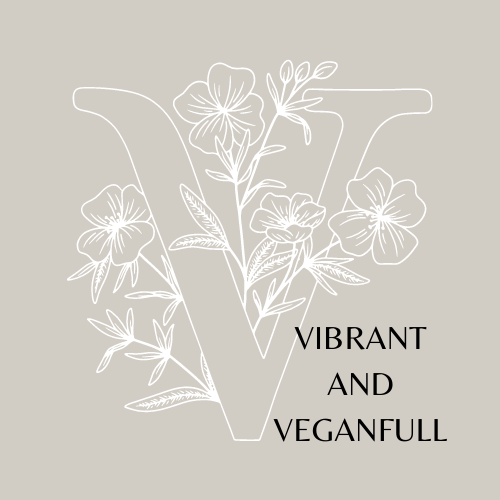Crunchy Roasted Fennel
- Jamie Langes

- Jan 14, 2022
- 4 min read
Here on the vegan side of vegetables, I have found new flavors and a lot of new ways of preparation to make those vegetables really sing. My favorite surprise? Fennel. I really couldn't even tell you why I decided to try fennel or what recipe it was that gave me the courage to buy a bulb of fennel at the store and prepare it. It was probably a fall salad if I was being honest.
Now, I try and incorporate fennel in more dishes; my most recent being this roast with some textural diversions and very simple seasonings. I love that this recipe uses the fronds plus the bulbs and turns golden in the oven. Truly this is a side that is spectacular right from the oven on your table; it's gorgeous.

Sustainability Spotlight: Fennel is an interesting vegetable with many flavors that are truly transformative depending on the preparation. Actually, as a member of the carrot family, but not a root vegetable, fennel is classified as an herb. Originating in the Mediterranean, fennel has been naturalized to North America and thrives in dry soils near the sea-coast or on riverbeds. This means that it doesn't require a lot of irrigation or intervention from humans if cultivated in a similar environment that this herb
originated.
More than that, though, fennel is an herb that also has been shown to thrive with intercropping. Intercropping is a technique for sustainable agriculture in which land biodiversity is accomplished in a method that practices growing two or more crops in rows or strips that are close enough for biological interaction. That interaction can improve resource-use efficiency for nutrients and water limiting required intervention by humans to increase yields or promote crop health. It also allows for space saving and resources while allowing the farmer to benefit from two (or more) crop types in the event that climate or other factors impact only one of the crop; diversity is accomplished.
Fennel when intercropped with dill in one study yielded the most favorable results when the crop diversity ratio was increased to favor the fennel bulb. While results of intercropping are not usually seen in the first year directly, in the second year and beyond, the crops usually have stabilized in their ecosystem together for resources which results in better yield results by biomass. Interestingly enough, the stabilizing effect that dill had on fennel in this study increased the fennel seed yield substantially in year two; by almost 50%. This is important to note because propagation of any plant requires positive yields of seeds; something that genetically-modified or engineered organics (GMOs) are prone to reducing. GMOs are often favored for their heartiness and adaptability to climate change, but with intercropping, studies have shown that heartiness of plants are retained at high levels thereby reducing the need for continued GMO favorability.
You can practice intercropping at home with a small herb garden (plant them together in one potter); maybe you try it by mixing fennel and dill (make it around a 2:1 ratio in favor of fennel). Or maybe, you mix Italian parsley with basil and thyme. In any case, allow them all to intertwine and grow amongst each other. See for yourself that the herbs thrive in a biologically diverse planter vs. a monoculture (just one herb in a planter).
Intercropping isn't a "new" idea; in fact, at a high level, it is a basic tenement of this planet called biodiversity. As more species compete in a space for resources, the more diverse and rich the environment becomes. All species thrive when in a biologically competitive environment; each finding their niche (their "home") in that environment to evolve and be the "best" in their specialization or evolutionary characteristics that allow them the most access to those resources. The most access to the specialized resources that one species needs in an eco-system, the more interdependent that system becomes and the more each species thrives because of that interdependency.
Humans have lost sight in our modern era of the value of diversity in their culture and in the world for this planet's resources. One of the best things we can do to increase our sustainability metrics is to honor, support, and desire true diversification. Start with herbs (start small) for this recipe and others and find out how intercropping and diversification truly excels the plants you grow.
Also, you will level up your home cooking with access to fresh and fragrant ingredients in the process; win:win!
Ingredients:
3 fennel bulbs; cut into quarters and then separated by bulb layers (like an onion)
2-3 large fennel fronds (diced)
1 tsp onion powder
1 tsp garlic powder
1.5 tsp herbed salt
2 tbsp avocado oil
1.5 cups panko crumbs (I used Gluten Free in this recipe)
Directions:
Pre-heat oven to 400 degrees F.
Combine bulb pieces through oil in a large bowl - toss to coat evenly with hands
Add panko to bowl and toss again with hands.
Pour bowl contents into a shallow casserole dish (I used an oval shape) large enough to spread out bulb pieces with little overlap.
Slide pan into oven and roast fennel for ~30 minutes or until crisp tender and panko starts to brown.
To get the golden color to pop on the panko, broil on high for the last 5 minutes of cook time to crunch the topping.
Serve alongside my Turmeric Potato Salad with Arugula and Tempeh Bacon.
With love & hope for a better future for all of us - Jamie




Comments